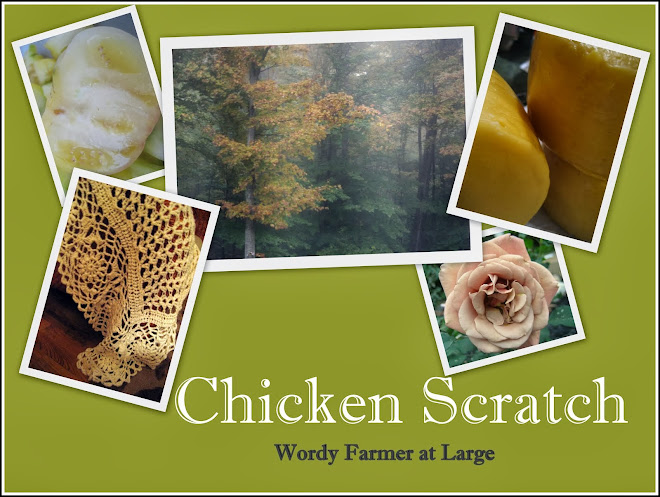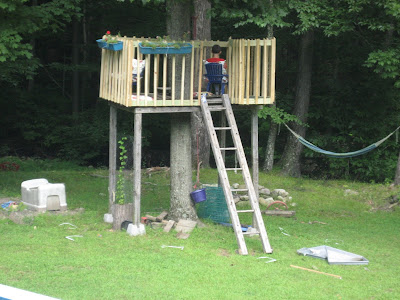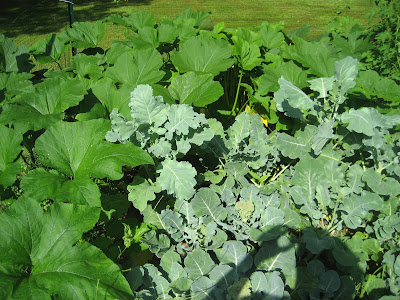Well, three of the kittens are gone, and half of my chickens are sold, and three more ducks have disappeared. It's been a rough week. I'd lie if I didn't say that when the people came to adopt the last two kittens I had tears in my eyes. It's all for the best, though. And the selling of my chickens has been especially hard, but it was the right thing to do. As to the ducks? I have no idea where they went. They disappeared during the day again. Truth be told, I'd been thinking about parting with them anyway, as they're fairly useless, won't go in easily at night, and the Muscovies have proven their worth about 8 million times in the short time they've been here. They've been eating flies like candy, they hardly eat much in the way of feed, and they're always in their house by 7:30 pm. I could set my watch by them. Why did I wait so long??
Olive is still here. I'd like to be upset about that, but I just can't. No one wants to buy a quality animal right now. I hear it from many, many people. Sell them cheap (like Oscar), and off they go. Sell them for a fair price (not high--she's got no papers), and they sit and sit. It's not just me--all the ads that were on Craigslist from before I put Olive on are still there, too. The cheap ones are gone, but that's it. I'm not too troubled about it. When the right person comes along, then it'll be fine. Until then, I'm enjoying the heck out of that little jumping bean. She and Amelia are now playing with Tallulah, who stays because she's Lilly's baby. Lilly is an AMAZING milker. She sucks at standing still, though. Some days she tap dances
way too much and she's put her foot in the milk bucket on more than one occasion, which thrills the chickens (who get to have the milk), but not me.
Between Lilly and Minerva, we're getting about a gallon a day. No, it's not dairy standards, but I'm not a dairy. It's a good amount for us, though I realize that two goats in milk is not enough to produce cheese and other things and still have a ridiculous amount of milk in the fridge for my son -the bottomless milk pit -to drink. Minerva is still making a minimal amount of milk, maybe a quart a day, but something is something, and I love her so who cares. Min's got the routine down pat. She's usually a pleasure to milk (some days, not so much, though. Tap dancing....you know what I mean??) and I just love that she knows what she's doing. We're besties.
Anyway, I have discovered Tallulah is nursing off of Lilly, so she's not a bottle baby like the other two bananas, and therefore is coming around more slowly. We're making inroads, though. She's 10 days old and has finally started to come and see what I'm doing. I still can't catch her to snuggle her easily, but progress is progress. I'll take it.
In the midst of all the animal craziness (and there's more, oh boy, there's more), I pulled out my back, and so spent the morning puttering in the gardens, which always cheers me up. I took some pictures, and I thought I'd share. Ready?
Squash Jungle
Bean Beds
Carrot Forest
I've already pulled out a pound of carrots from here, just in "thinnings". I'm excited to see how many pounds are in here all together.
Small Tomatoes
The back garden's tomatoes are developmentally behind the front garden's tomatoes. I think that lasagna gardening is a miracle. Though I have been steadily improving the soil in the back garden, the fact is that it's still crappy clay (though enriched crappy clay), and though the plants are growing better than they have in past years, it's still a struggle. In the front, since I lasagna'd, they don't have the same struggle. The plants are HUGE.
See? Those two posts that stick up there from the tomatoes are 9 feet tall. Just for some scale for you. The tomatoes are nearly as tall as I am.
So yes, lasagna gardening does work. Thank you for asking. :)
Broccoli-Broccoloo-Broccolalala
Front tomatoes
Tomato Insanity
Corn
Forget knee high by the fourth of July. The corn was waist high. Now it's chest high. I just read a book about permaculture where the author said that it was sad that all we look for is knee high by early July, when if our soils were as fertile as they could potentially be, we should expect so much more. It was an interesting thought.
Pumpkin Attack!
Trying to Eat the Broccoli
I think the two colors of the leaves are pretty, don't you?
My son's "School Cabbage".
(Don't ask)
The Smallest Bed of Cucumbers.
I just thought it looked so pretty.
And in other areas...
The Berry Patch
These are supposed to be Anne, a yellow raspberry. However, they're turning red as they ripen. Something's rotten in the state of Denmark, methinks....
Blackberries
Red Raspberries
These are ginormous this year. I think it's because during the fall last year, I mulched them with about a foot of dry leaves. The raspberries are as big as my thumb, no exaggeration. So, if you have raspberries, mulch them with a foot of dry leaves. It seems to work.
Pretty Flowers
A giant pumpkin blossom
Pretty Morning Glories
Rose Scented Bergamot
Why yes, I do grow bee balm and flowers in my vegetable garden, thank you for asking! The bees and bugs just love it.
And I don't want to leave you without a gratuitous animal picture of cuteness, so here they are, freshly shorn, so they look crazy, but all the cooler for it, I think.
Pickle
Colette
Or, rather the back of Colette's head. Those pom-pom ears crack me up!!!!
Have a great day!

























































